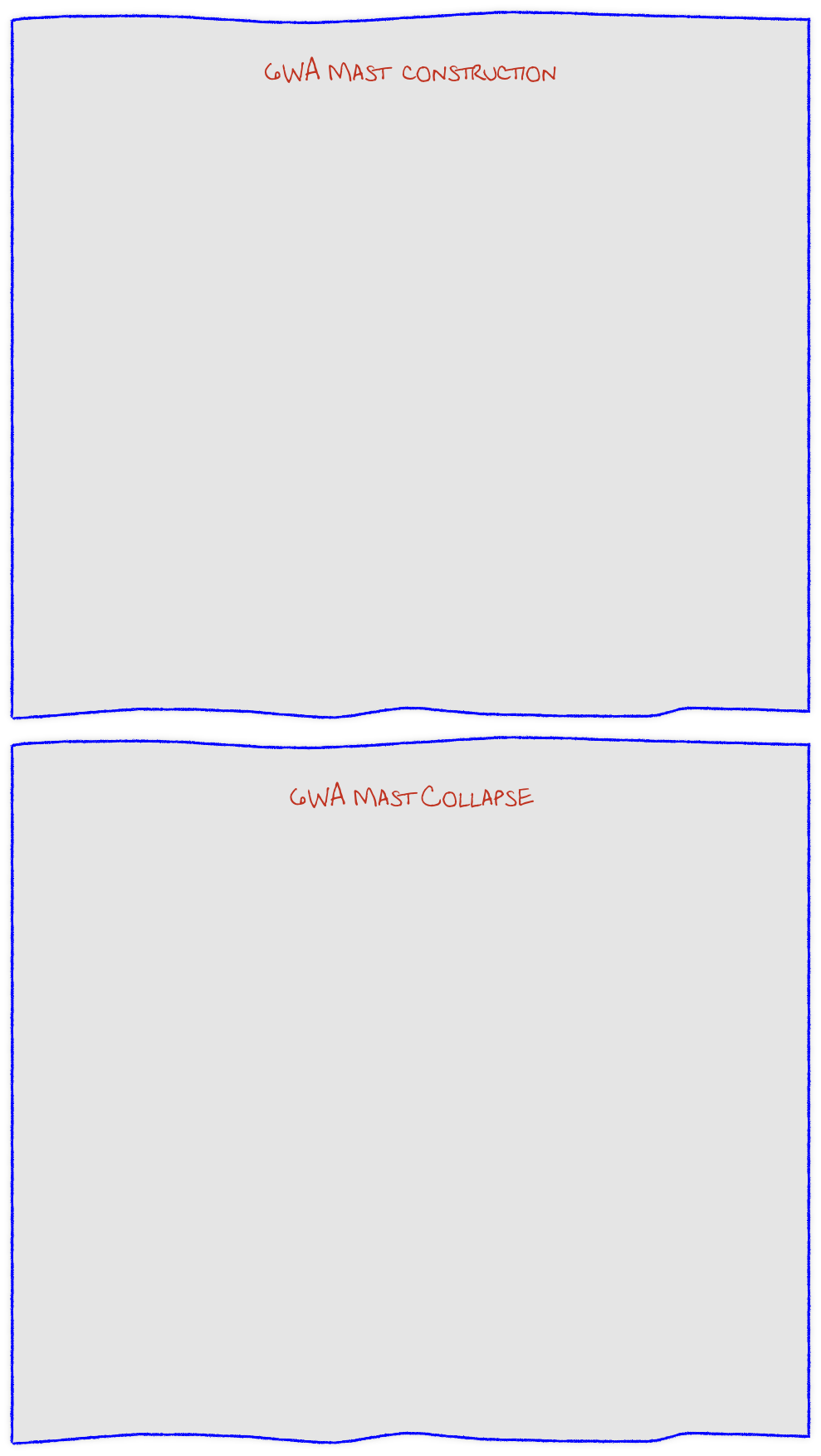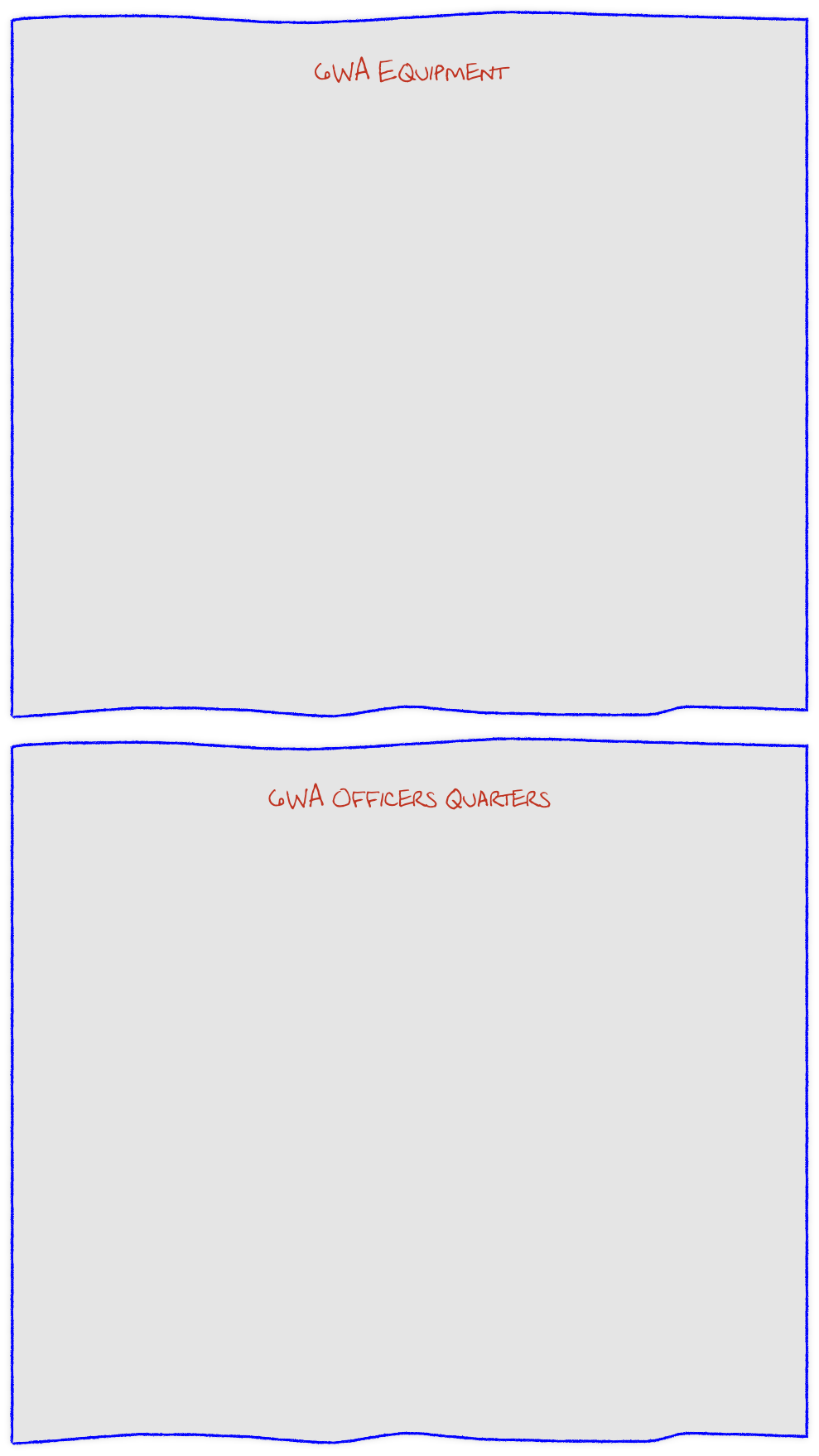
Welcome to Garys’ Web Page (Updated May 2025)
)
Smith Domain Incorporated


Statement of Significance
The building is a fine representative example of the Inter-War Stripped Classical style. The place has landmark value; its heavy masonry shell is a visual contrast to the surrounding landscape, including homesteads and shearing sheds.
The place has historic value as tangible evidence of the importance of Wagin as the major administrative and service centre for the district. The place also has historic value as a reminder of the importance of the radio as a communication tool and provider of entertainment prior to the introduction of the more sophisticated communication technology.
The place may have scientific value and should be assessed in more detail when considering a development application.
Physical Description
The building is rectangular in plan and set well back from the street alignment in a cleared setting on the north side of the Arthur Road on approach to Wagin. The building is single-storey and built in the Inter-War Stripped Classical style.
Entrance to the property is through a gate framed by tall heavy masonry piers. The piers are rendered in a style to match the building and contain an inset with wrought iron grills and a circular plaque bearing the name, 'W6A 935'.
The walls of the building are rendered masonry built on a brick plinth. The building is functional, in its precise shape and regular fenestration, and symmetrical about a central open portico. The portico is implies a classical portico with its two central columns with fluted shafts that support an unclassical version of an entablature.
The roof features a series of lanterns, some vented, metal vents and wide boxed eaves. The fenestration is regularly spaced and vertically proportioned.
The place comprised a engine room, workshop, pump houses, cooler house overhead water tanks, underground water tanks, and double metal garage
History
During 1935, work began on the aerial for the radio station 6WA, including a 230m mast and a cooling system. On 25 August 1936, a high wind wrecked the top section of the mast and 210m of it crashed to the ground.
On 7 December 1936, 6WA was officially opened and an inaugural program held in the Wagin Town Hall. The opening speech of the Postmaster General, Mr McLachlan, was relayed from Canberra. The importance of the station is apparent in the press coverage given to the opening, in the local newspaper:
The place that this new Station, which is recognised to be the most powerful in the Southern Hemisphere - plays in our national life is fully appreciated by those who reside in country districts, and particularly those who are separated from the city of Perth, where all but two of our West Australian broadcasting stations exist, by the long length of the Darling Ranges.
Work was first commenced on the site on May 28th. 1935, when the preliminary work of marking the foundations etc., was carried out. Since that time, the work on the new Station has been pursued with the best speed compatible with the great care needed on such an intricate and elaborate construction.
A description of the site was also provided in the local newspaper:
Viewed from the Main Wagin Road, the completed Station presents a substantial edifice to modern engineering skill and careful lay-out. Two massive gate-posts, upon which the monogram of the new Station. "6WA", is lettered, guard the sweep of gravel which leads to the main entrance. Two carved pillars help to support the porch which abuts from the main entrance, and lends an air of solidity to the whole construction. Looming at the rear of the main building is the towering 650 feet Mast, surmounted by its queer shaped umbrella-like top, the actual size of which is quite misleading when viewed from the ground.
In 1957, 6WA became the most powerful in Australia with the addition of a new 50 kw transmitter which made its output five times as great as previously. The cost of the new equipment was £50 000 and the building alterations amounted to £1 500. The more powerful transmitter made a great difference to people's lives in the country areas of Western Australia. During its construction, it had a large impact on the local community as it provided additional work for locals and an increase in social activities.
In 1996, the site is no longer used.




Commonwealth of Australia Gazette. Public Service (National : 1977 - 2007) Thursday 26 March 1981 p 181
Government Gazette Notices
Engineering Department, Regional Operations Branch
Technician (Telecommunications) $11657-14288, Radio Section, Wagin
Responsibilities: No. 7766—Carry out maintenance duties on high power broadcasting and low power television transmitters in the district. Also carry out first-on maintenance of broadband and small capacity radio communications equipment.
Qualifications: As prescribed under Section 48 of the Telecommunications Act, notification of which appeared in Gazette No. PS 114 of 3.4.80.
Note: Situated 220 kilometres south of Perth with a population of 1800, Wagin has a High
School to Year 10 and a bus service to Narrogin Senior High School; a district hospital with two resident doctors and a dentist; numerous modern sporting facilities; a drive-in; commercial TV; supermarket and co operative; CWA and railway facilities. The 6WA station is located 24 kilometres from the town, which is about fifteen minutes drive. Commission Housing is not available and accommodation may be difficult to obtain. Apply: TA6
Commonwealth of Australia Gazette. Public Service (National : 1977 - 2007) Thursday 4 June 1981 p 93
Government Gazette Notices
Regional Operations Branch
Technician (Telecommunications) $12077-14802, Radio Section, Wagin
Responsibilities: No. 7766—Carry out maintenance duties on high power broadcasting and low power television transmitter s in the district. Also, carry out first-on maintenance of broadband and small capacity radio communications equipment
Qualifications: As prescribed under Section 48 of the Telecommunications Act, notification of which appeared in the Gazette No. PS 14 of 3,4,80.
Note: Situated 220 km south of Perth with a population of 1800, Wagin has a High School to Year 10 and a bus service to Narrogin. Senior High School; a district hospital with two resident doctors and a dentist; numerous modern sporting facilities; a drive-in; commercial TV, supermarket and co-op, C.W.A, and railway facilities. 6WA station is located 24 km from the town, which is about fifteen minutes drive.
Apply: TA6
Commonwealth of Australia Gazette. Public Service (National : 1977 - 2007) Thursday 9 December 1982 p 102
Government Gazette Notices
Technical Officer (Telecommunications), Grade 1 $17117-20791, Radio Section 6WA, Wagin.
Responsibilities No 8696- Shift Technical Officer, Grade 1, responsible for the operation and maintenance of a 50 kW MF transmitter, 2 low power TV transmitters and a broad band radio repeater.
Qualifications An approved technical college certificate or other approved qualifications and requisite experience Previous experience in the maintenance of MF radio transmitters and low power television transmitters desirable Note Situated 220 kilometres south of Perth with a population of 1800, Wagin has a High School to year 10 and a bus service to Narrogin Senior High School, a district hospital with two resident doctors and a dentist, numerous modern sporting facilities, a drive-in, commercial TV, supermarket and co-op, CWA and railway facilities 6WA station is located 24 kilometres from the town which is about 15 minutes drive—Apply TA6
This is the job application that I applied for in June 1981
ABC transmission station listed on State's heritage register
Friday, 27 July 2001
The State Government has moved to give heritage protection to Western Australia’s first regional radio station.
Environment and Heritage Minister Dr Judy Edwards said the 1930s-built ABC transmission station in Minding, near Wagin, had been placed on the State’s Register of Heritage Places.
“The station formed part of the ABC’s national network and played an important role in the evolution of broadcasting in Western Australia - as the site of the first national broadcast from the South-West,” Dr Edwards said.
“The station was also a significant technical achievement. Its mast was the tallest and most powerful (10kW) in Australia and remained so in 1957, when converted to a 50kW transmitter."
6WA Minding - which Wagin residents unsuccessfully petitioned to be named 6WA Wagin on the grounds that Minding was not on any WA maps and possessed only a school - was built by the Commonwealth Department of Works for the Post Master General’s Department.
“A landmark on the Arthur Road between Wagin and Arthur River, the station is a fine example of the Inter War Stripped Classical style and the only such design in WA,” she said.
Its place in the national broadcasting network grew from the ABC’s recognition that regional stations were needed to service regional areas, while also ensuring radio reception was free from ‘fading’, which was a constant problem away from metropolitan centres.
Three other masts similar to Minding’s were built at Nhill in Victoria and Cummock and Lawrence in New South Wales.
Dr Edwards said the small wheat and sheep farming locality of Minding was chosen because it was the highest point in the vicinity and could best serve WA’s rapidly developing South-West populations.
“Rural areas were still in the grip of the Depression, there was little work and poor crop returns, so plans to build the station were warmly greeted by the Wagin district community,” she said.
“The Francisco family who sold land to the ABC for the station reported the sale was ‘like manna from heaven’. One son, Bert Francisco, went on to become a station technician after working on it during construction.”
While the station was being built, most of the workforce of about 60 lived on site in tents. Conditions were hard - muddy and harsh in winter - and strong winds delayed construction and brought down almost half the 198m mast.
After an eventful gala opening on December 7,1936, when a bus carrying visiting artists crashed on the return trip and ABC staff had to treat the injured back at the station - the station went on to play an important community role. As well as broadcasting news, music and serials, the station announced local emergencies and bush fire alerts.
Following World War Two - when staff could not enlist as they provided an essential service - plans were drawn to replace the 10kW transmitter. When a 50kW transmitter was installed in 1957, 6WA was again Australia’s most powerful transmitter.
Technological developments following the installation of a step-down transformer in 1961 meant that the transmission station gradually became an unmanned facility. By 1996 it was unoccupied, though the mast continues to operate under direction from Perth.
In 1997, the Wagin Shire Council adopted its Municipal Inventory of Heritage Places, which includes the ABC transmission station.
Dr Edwards said the ABC transmission station had been the site of many social gatherings and its 50th anniversary celebrations in 1986 showed the depth of community support for the place.
I had forgotten we had to pay a licence to receive radio and TV signals back then.



- 6WA.mp3
To PLAY history, Click the fwd ARROW. To stop the audio, press the PAUSE, STOP or MUTE buttons



| An Enjoyable Trip |
| Aviation Events & Links |
| Wagin Airstrip |
| Katanning Weather |
| Katanning Sale Yards |
| 6WA |
| Mothers Memiors |
| Carmans Memiors |
| Amateur Radio |
| Other stuff |
| Suns Azimuth Tracker |
| Sun Solar Tracker |
| Suns Elevation Tracker |
| leaf rake |
| windrow rake |
| Fire Lighter |
| Oil Heater |
| Yamaha HS6/8 |
| Power Monitoring |
| Stappleton Station Bores |
| Smithvale UPS |